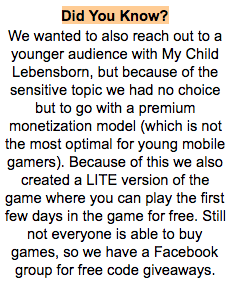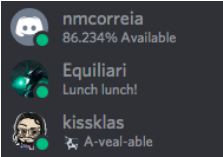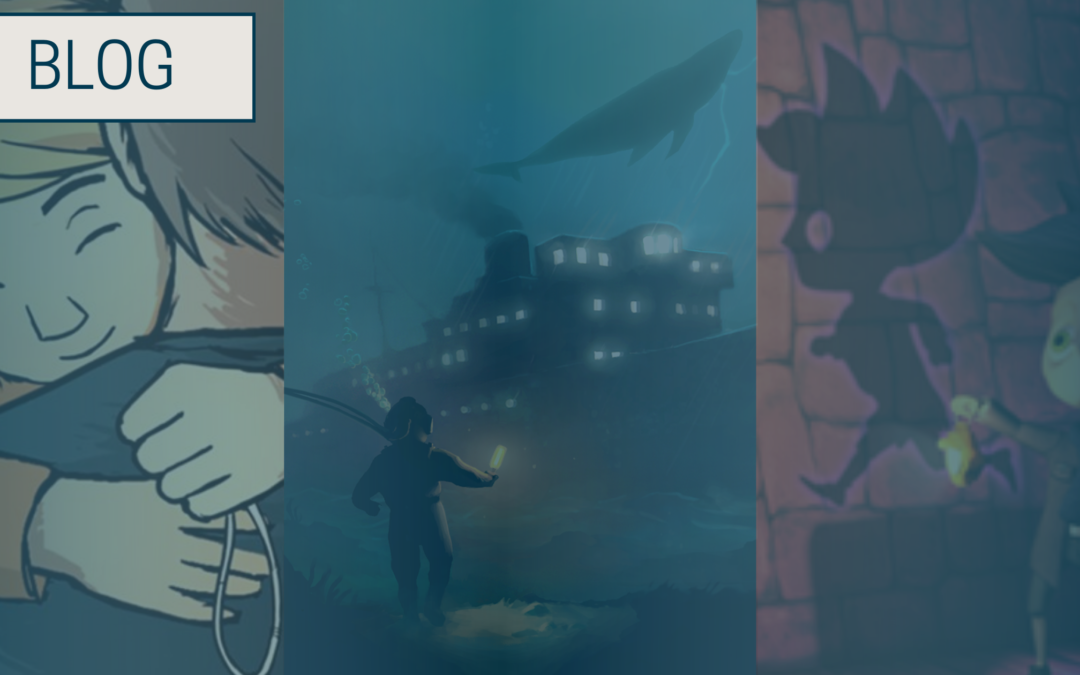
Creating Emotional Narrative Games
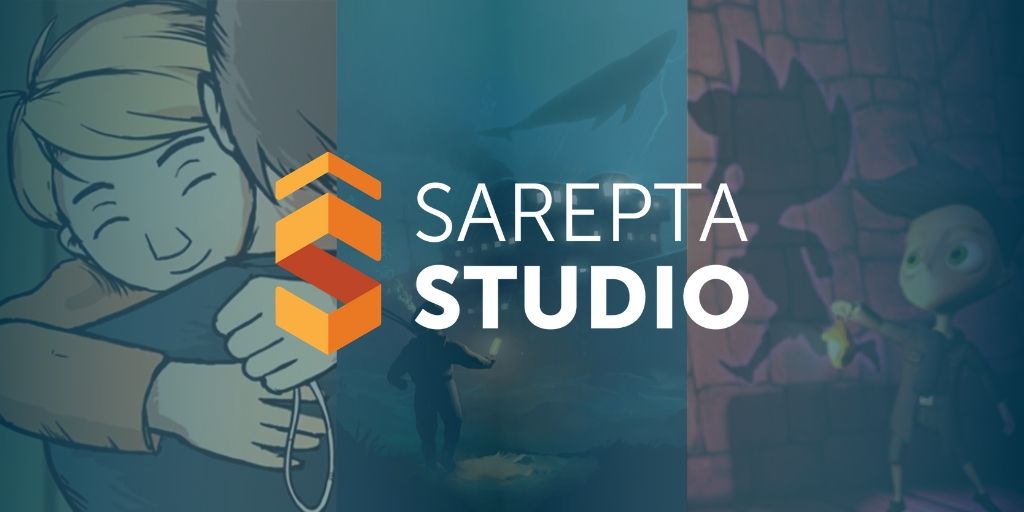
In our first post I mentioned how we started Sarepta studio and that it was a long road getting to where we are. Sarepta’s vision is to create emotionally impactful and atmospheric games, games that stay with you. But this clear vision was solidified only a few years ago. Before that we had difficulties finding a clear vision for our games, but we all agreed that we wanted to create games with an emotional core.
Our first game, Shadow Puppeteer was an atmospheric co-op adventure with underlying themes of loneliness. You play as a boy and his shadow, with a simple premise and minimalistic narrative. However there is so much backstory that is never really told due to budget limitations, we go into some of this in our Shadow Puppeteer blogposts but we might go into more details about this in further posts.
Later we were so fortunate to get to collaborate with Teknopilot on “My Child Lebensborn”, a story driven parent-simulator about children born of war. This game made a huge impact on us as we were working with it. It was both terrible and wonderful to work on something so important, deep and painfully honest.
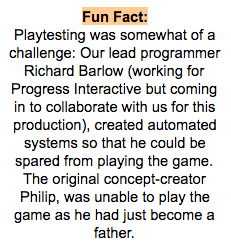
Fun Fact #1
The response from gamers around the world, really helped us to understand what it is that we wanted to do with our games. To create something emotionally impactful.
This vision has helped drive the design for our upcoming title: Project Thalassa. It is a first person psychological drama about a deep sea diver dealing with trauma & PTSD. It is a game we will share a lot more about in the future.
If you’re currently reading this, you might be feeling the same way. However, is working with difficult topics really such a charming experience? I’ll share what we learned about it.
PROS & CONS OF WORKING WITH DIFFICULT TOPICS
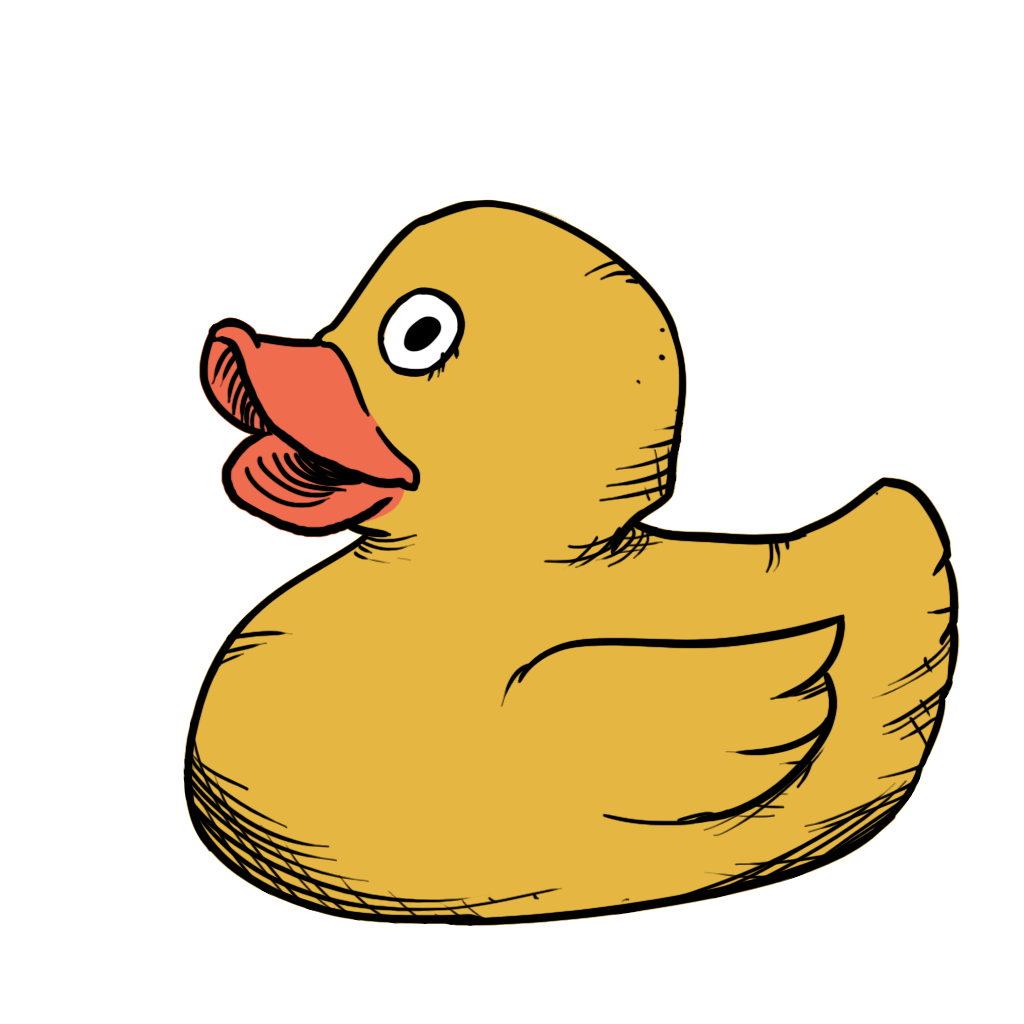
This rubber duck was supposed to be a toy you could buy to play with when giving Klaus/Karin a bath, but it had to be removed as these did not exist in 1951.
Forever in our hearts rubber-ducky ;_;
Pro: Lots of material to take from
When you have existing stories or challenging universal themes to work from, you don’t have to start from scratch. There is a lot of material there already to get inspired by.
Con (but also Pro): Limitations
Working from existing material will create a lot of limitations. It could be monetization limitations, gameplay techniques, graphic design, content that you would like to have but that you realize will go against historical correctness.
Although it does make the process more time-consuming, limitations like these could help boost your creativity. Limitations might take you down a path you wouldn’t have dared/bothered to explore otherwise.
Con: Responsibility
When you try to tackle someone’s story, or difficult topics you are responsible to be true to the story and theme. If not handled sensitively or if it is rushed, your game can harm more than it helps. You will be under a lot of scrutiny, and not everyone might see or believe the sincerity and hard work you have put in.
Pro: Making a difference
Sharing someone’s story or trying to get people to reflect on something important can be very impactful. Seeing all the positive feedback from players, having people share their stories or talk about how you opened their mind to something different, is really rewarding. Making the hard work of game design worth it. If you play a game you enjoy, or that mattered to you in some way, make sure to let the developers know. You will make their day 🙂
Con: Trauma
Certain topics are extremely painful, that is why you want to explore them right? Be aware that it can take a toll on you, more than you might have expected.
Con: Self-doubt
This might not be relevant for everyone, but when creating something that is narrative-driven and relies heavily on the player’s empathy it might be very difficult to really know if you are on the right path or not.
Con: Finances
It might be difficult to get a quick proof of concept for a narrative and emotional game. And if you have certain limitations that force you to not make the most optimal choices from a monetization standpoint, then things could get tough. It will be harder to get publishers, and the game might not catch on right away. Some developers are lucky enough to get government support for these types of games.
Pro: If people care, they will talk about your game
This is just anecdotal from our experience with one game but: When My Child Lebensborn was launched we didn’t have the most reach (although many outlets wanted to write about the game). It took quite a while before the game got traction and started selling well. The reason why we still see spikes, even though we have no marketing budget, is because it is a game that makes people care. We are incredibly lucky to still get a lot of attention and reviews for My Child Lebensborn, and people are kind enough to share their experience with others.
Overall, working with emotional topics in narrative games is exciting in many ways, and challenging in others. We hope your journey is an exciting and awarding one, just like ours was.
-Sarepta studio
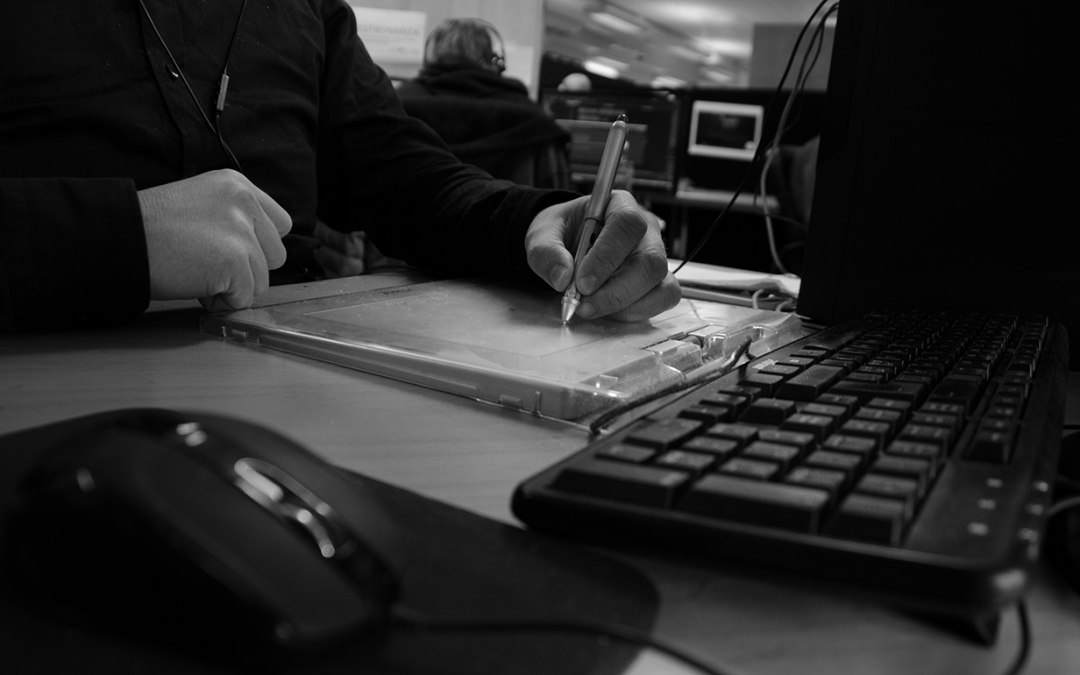
Working From Home – The Sarepta Way
Working from home became the new norm in the past few weeks for many businesses. At Sarepta, even though we had people working remotely most of us were in an office setting. Transition into remote working had different effects on everyone, and we all learned something from the experience. Here is how it went for us:
Catharina:
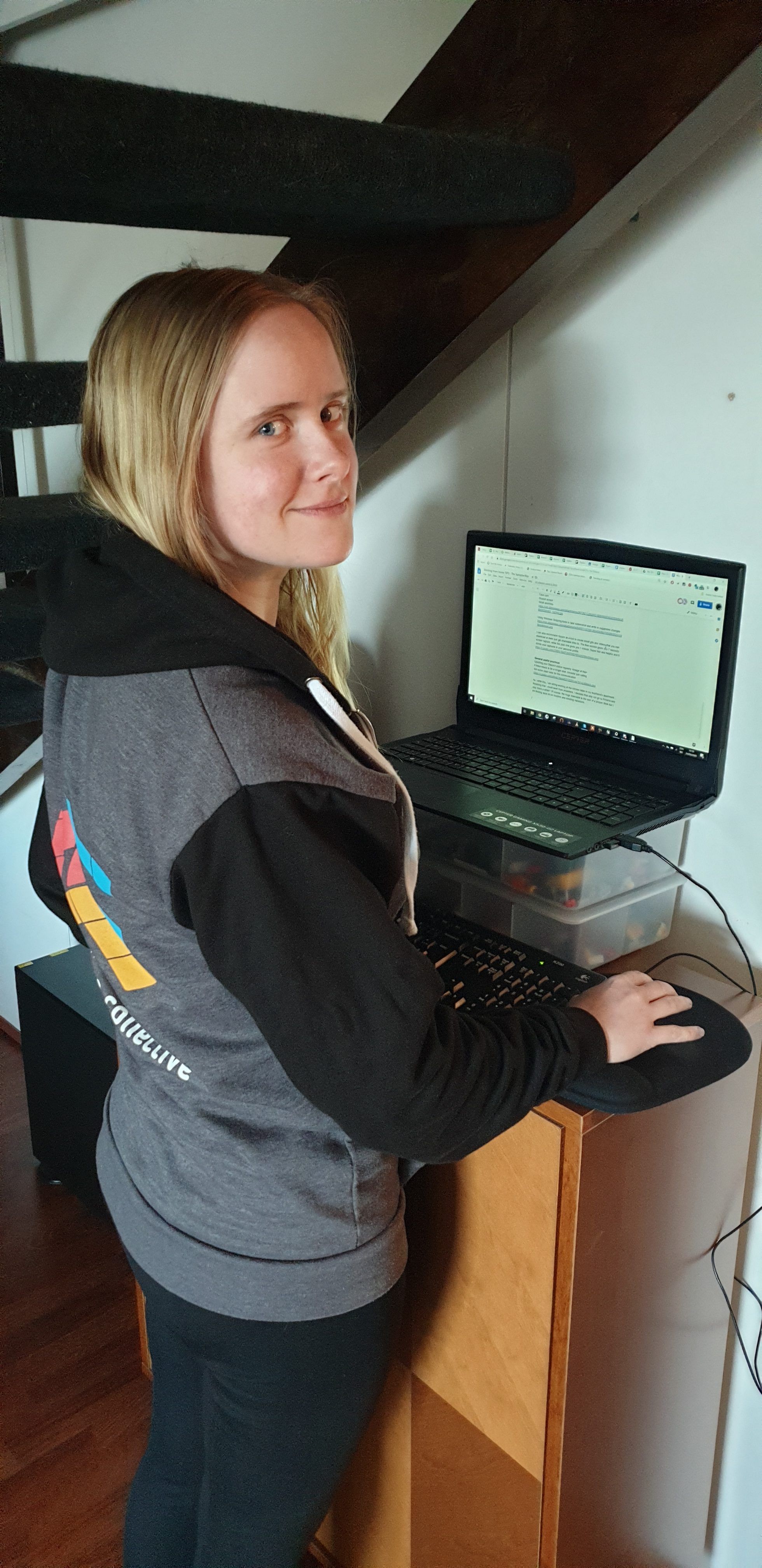 Having to work from home was a real nightmare scenario for me initially. Whenever I am travelling and try to work away from the office I always feel so distanced and out of the loop. It is more challenging for me not being able to just walk around in the office and see how people are doing. It is a lot easier to see when people are available for a chat when you walk around in person, remotely you are at an even greater risk of disrupting people’s meetings and flow. During creative meetings I also communicate largely with drawing on a board, gesturing with my hands, interpretive dance… This gets more difficult when working digitally
Having to work from home was a real nightmare scenario for me initially. Whenever I am travelling and try to work away from the office I always feel so distanced and out of the loop. It is more challenging for me not being able to just walk around in the office and see how people are doing. It is a lot easier to see when people are available for a chat when you walk around in person, remotely you are at an even greater risk of disrupting people’s meetings and flow. During creative meetings I also communicate largely with drawing on a board, gesturing with my hands, interpretive dance… This gets more difficult when working digitally
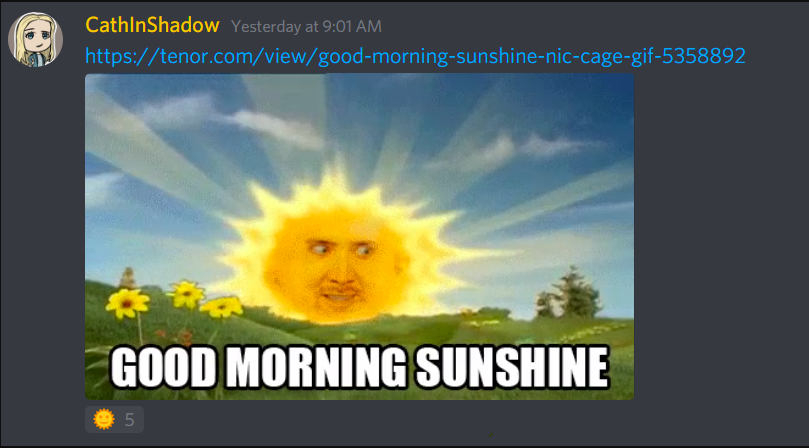
Good way to start the day
Luckily, the change over to home office was a lot smoother than anticipated. Of course it might be slowing some things down, but overall we have gotten more systematic with the use of our Discord communication. For “Standup” we use the general voice chat channel (which Discord has updated to now allow 50 people during this crisis). We still end our meeting with morning stretches.
As I write this, I am sitting working at the kitchen table in my boyfriend’s apartment. Realizing that I could work from anywhere, why not go to Finland and stay there a while? Of course, the huge downside is the lack of a proper desk but I am finding ways to be creative to get variations.
Things are going a bit slower right now, and I still miss the team, the collective, our offices but feel insanely lucky that we have the technology and the means to continue working through what is happening.
Things that help during creative meetings:
Using facecams & shared screens are very helpful to keep the meetings as real as possible. We also use small sketches to describe what we say and write our suggestions on screenshots to write in our suggested changes (Windows Snipping Tool is useful)
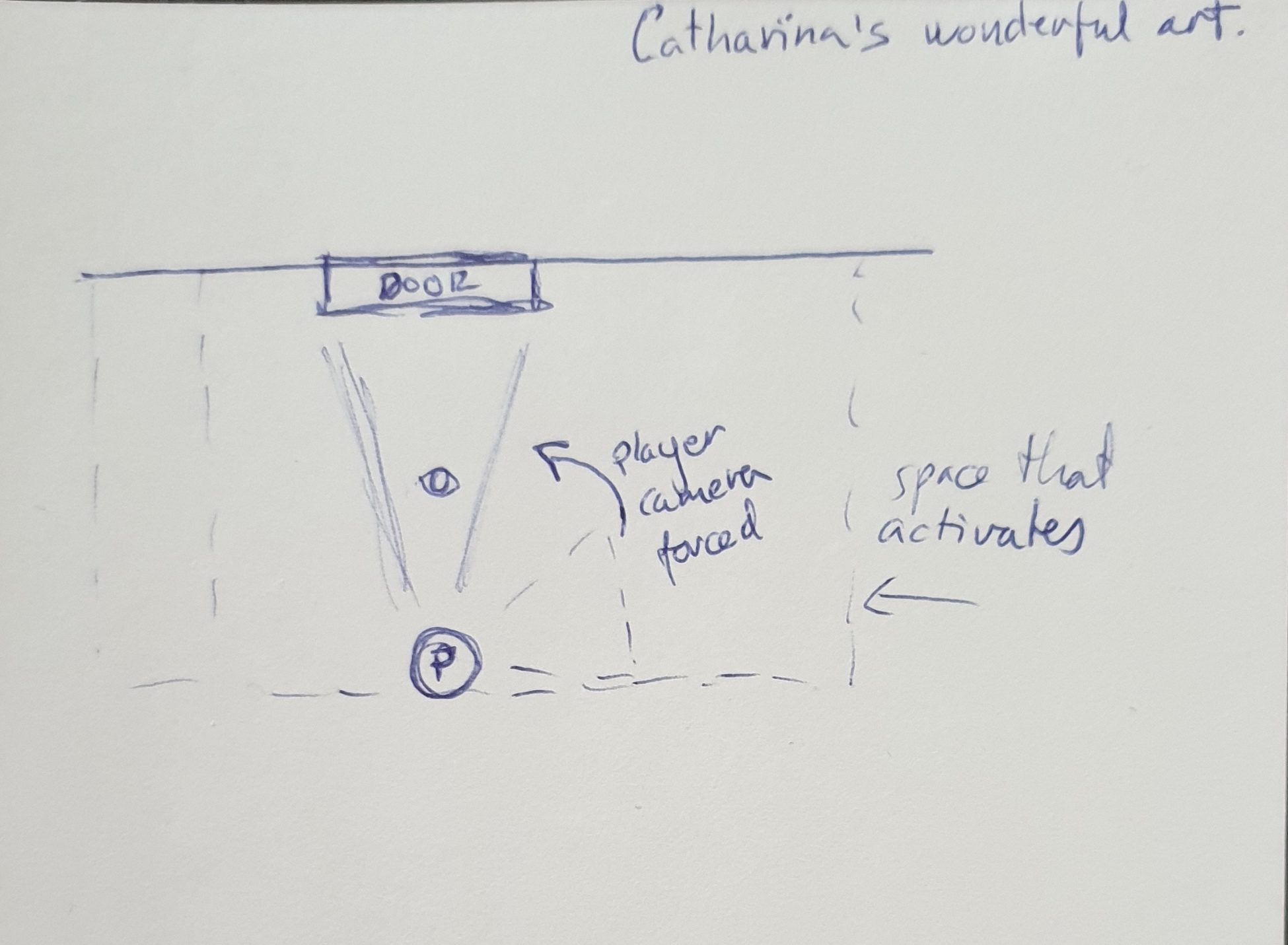
Catharina’s wonderful art.
I can also recommend Gyazo as a tool to create small gifs and videos that you can download or even just get shareable links to. The free version gives you 7 seconds screen capture, while the paid one gives you 1 minute. Super fast and helpful and it stores your captures in your personal profile.
Discord Tips:
- Set some general rules for the communication.
- If there needs to be a longer chat, consider just calling.
- Update your Discord status regularly so people will know what you’re doing.
Yvette:
To me as the new member in the team and also being new to Norway working remote is hard. Not because of the work itself but because of the lack of personal interaction e.g. with the team in general or having a nice chat while getting your coffee. The first days I also lost my daily routine, which I built up around going to work but I started rebuilding this as best as possible. Besides the lack of personal interaction I lost a lot of movement opportunities (gym closed, walk to the office is no longer necessary) which has a major impact on your body if you have an inactive desk job. So I try to be as active as I can. I start my day with a short home workout, make a walk in my lunch break and make sure to walk or ride after work is done for at least 30 minutes.
 Since everyone of us has an inactive job I try to motivate everyone in our team to be a bit more active and started the “Push Up Challenge” where everyone tries to do as many push ups as possible every (other) day. I would also love to improve this with more workouts to keep everyone a bit more active during the day. It is also great to push everyone who is a bit more competitive to have a new fun challenge that can be timed whenever they have the time during the day.
Since everyone of us has an inactive job I try to motivate everyone in our team to be a bit more active and started the “Push Up Challenge” where everyone tries to do as many push ups as possible every (other) day. I would also love to improve this with more workouts to keep everyone a bit more active during the day. It is also great to push everyone who is a bit more competitive to have a new fun challenge that can be timed whenever they have the time during the day.
This is, to me, a nice way to combine the need for movement and to have more interaction with the team
Besides that I am happy to have the opportunity to work remotely with great tools which make it easy especially in these “chaotic” times. It also gives us the opportunity to improve our work from a different angle and is, also, a new challenge for everyone. We can learn and adapt better ways to communicate and work with each other. This will lead to improvements back in our office days when we will meet again face to face.
Health Tips:
- Be active (short home workout, walks, ride your bike, go out with kid, dog….), short coffee walks were always good for me to “get the blood running” again after a long time sitting, just make a few more smaller breaks with some movement to stay focused
- Open the windows to let some fresh air in and also daylight
- Eat healthy (eat your vegetables and fruits and do not fall back on many sweets or “processed” foods)
Eylul:
Since I’ve been working remotely for quite a while now, the whole office turning remote actually made me very excited! Thanks to discord, I became more in tune with what everyone else has been doing and set a better office situation for myself since I used to create my own hours and work as much as needed to get a task done, instead of doing the good ol’ 9-5. However staying at home this much does take a toll on one’s productivity and mentality. I found a few things that helped me in this situation.
First, have a designated workspace. Remember people saying “don’t do anything else other than sleeping in your bed”? Same goes for your working area as well. It helps your brain to get into ‘work-mode’ and enhances focus. Once you start doing other stuff in your workspace, your brain will start drifting. If you want to check reddit real quick while working, get up and do it somewhere else. This again, helps to both keep you from scrolling endlessly without noticing and will help with the differentiation between work area and play area in your brain.
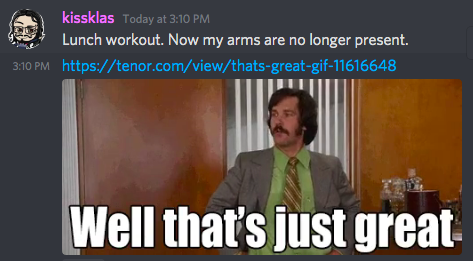
Might not be the best idea to push too hard 😀
Second, create a to do list for the day and put time limits on your tasks! Since you’re home, it is easy to overwork yourself without realizing since you have that one task that you have to get done TODAY. It leads to burnout quickly and dreading the time you spend at home working in the long run. If you put hour limits on the work you’re doing you’ll be focused better and will know when to end the work day if you’re making your own hours.
Third, if you find yourself getting too distracted during your breaks, do a small chore. It’ll keep the productivity flow going and will get another task out of the way. (We’ve been using the push up challenge as a quick break activity.)
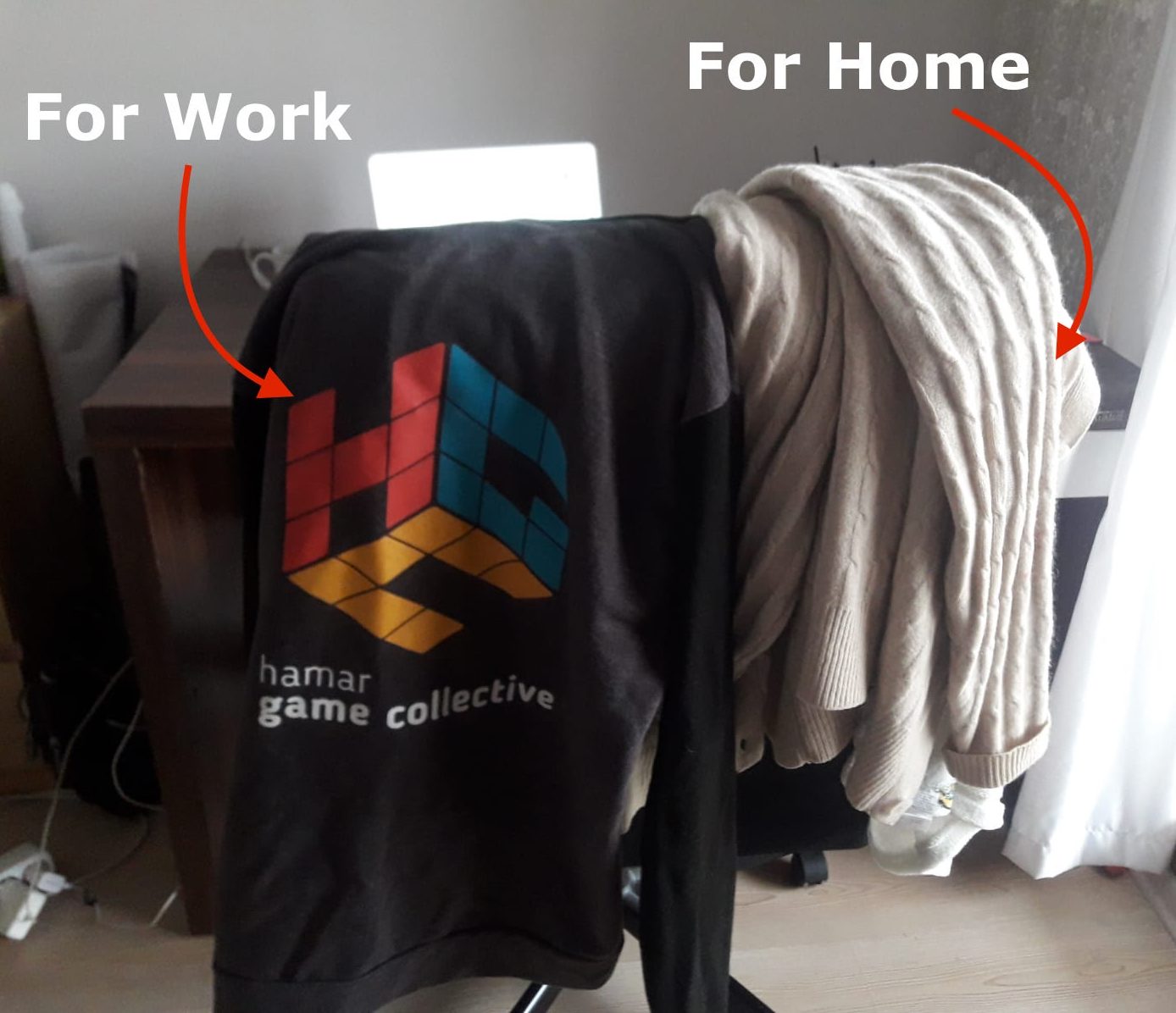
If you can, change into different clothes than what you went to bed with. (If you’re lazy, wearing a different cardigan creates the work mood just as well.)
General Tips:
- Always work at the same space and play somewhere different (if possible).
- Create to do lists and put times on tasks to refrain from overworking/underworking each day.
- Do small chores during breaks to keep productivity going
- Drink water, don’t live on coffee.
Overall, we are extremely grateful that we have the privilege to keep working remotely . We will learn more and make the best of this situation to bring our new games to you, and we hope everyone going through similar scenarios can do the same. Have your routines, take good care of yourself and learn ways to cooperate with your office in this new setting. But most importantly, stay safe and healthy.
-Sarepta Studio

Try to see the silver linings.
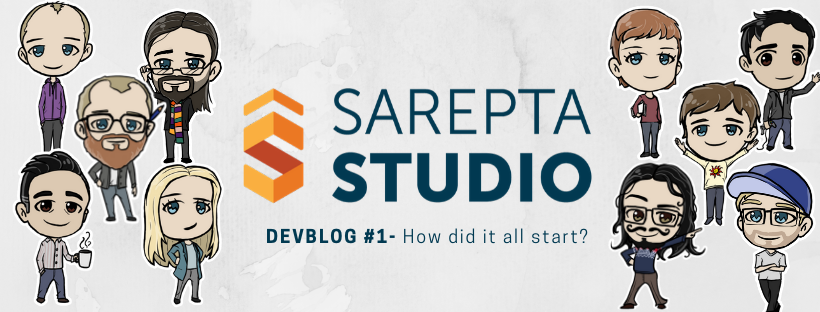
Indie Devblog #1 – Sarepta studio: How it all started.
Fall of 2010, 15 fresh graduates, from the small town of Hamar joined forces to create a game development studio. 10 men and 5 women, with very little knowledge of entrepreneurship or any of the aspects on how to run a business, boldly ventured out with their laptops under their arms and little else.
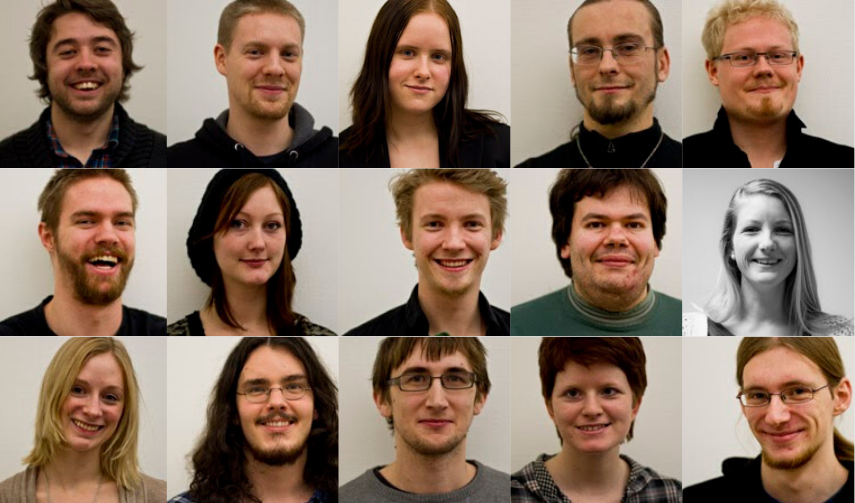
The main vision was not one I would have advised any of the new fledgling studios of the Hamar Game Collective today. More specifically, if I had met myself back then I would have slapped the back of my head and told me to come back when I had something less crazy.
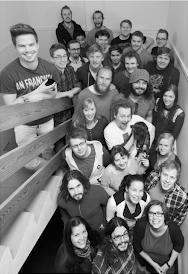
The start of Hamar Game Collective.
Our vision was simply to be able to build a company that all our classmates could join. We wanted to be inclusive, to take fate into our own hands and not leave anyone out in the cold.
We saw that some groups of graduates before us had started companies that were just too small to be able to get anywhere. They started out doing contracting work for other industries to earn enough money so that they could begin creating their own games. To us this seemed like a far too slow-paced and risky strategy. What if, we instead were enough people to do both at once? Then we could get further faster and we could hold on to our vision of making our own path, all of us together.
So that is how we started, one part of the studio working on our own IPs and one working with various client projects.
It has been an interesting (and turbulent) journey: We had no idea what we were doing, and our advisers knew nothing of how a game studio should be run.
Almost 10 years later we are still going, against all odds. Partially because of a great local community, people who wanted to help, other game developers, the Norwegian support system and because of the amazing work-environment that has been created in Sarepta through the years. An environment built on trust, self-sacrifices and passion.
After all that we’ve been through, after many years of falling down and getting back up we have many achievements that we are proud of (winning a BAFTA being one of them) and that continue to drive us.
So, what have we learned?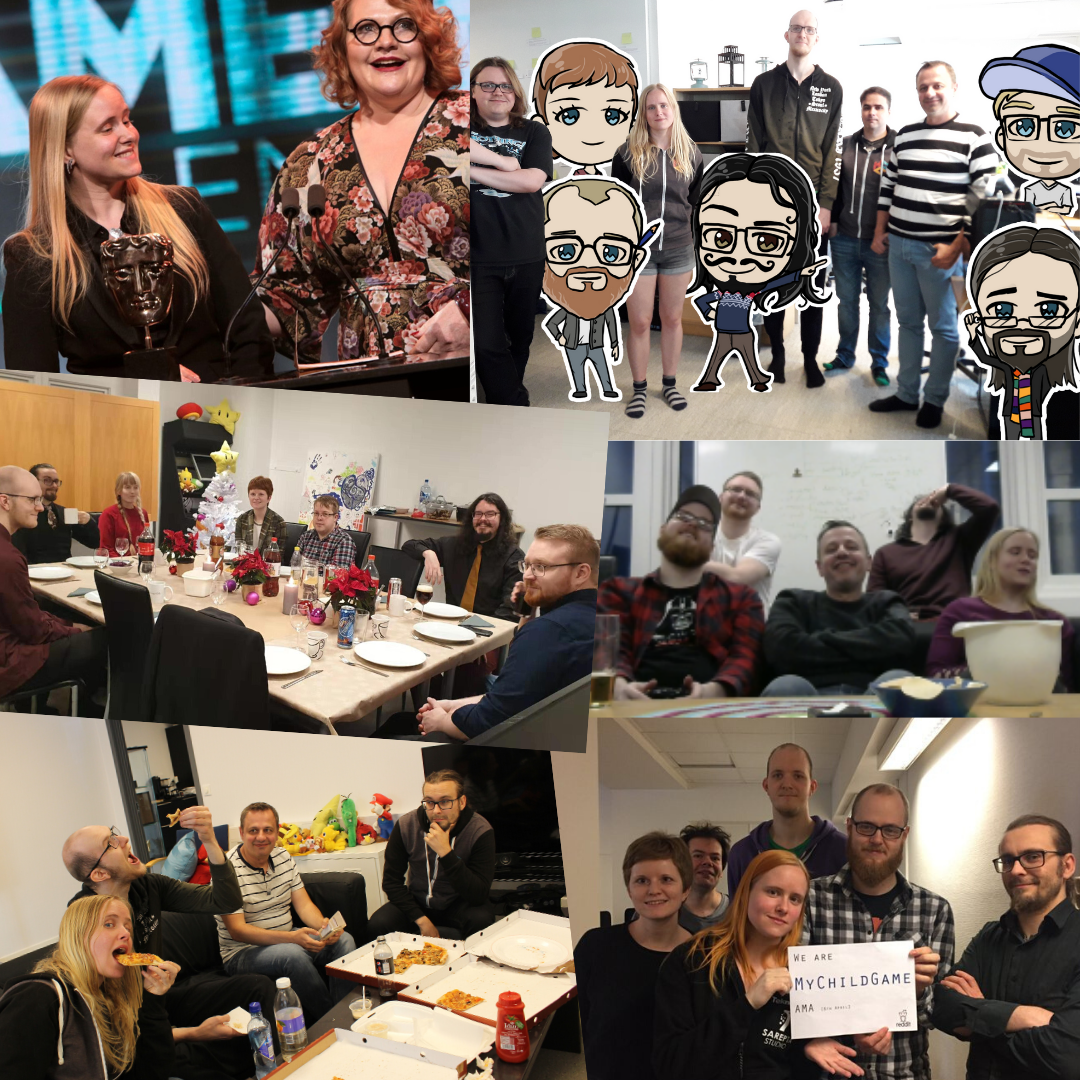
A lot. And it is this that we wish to share with you.
The goal of this blog will be to share our experiences, who we are, and what our vision is for our corner of the game industry. To share with you what we are making and give you insight into how we build our games.
We all start from different places. There is no one truth when it comes to how to make games, which elements are most important, how to build a company, what toppings to have on your waffles (butter of course). This is just one side of the story that hopefully can entertain and inspire you.
– Sarepta studio
